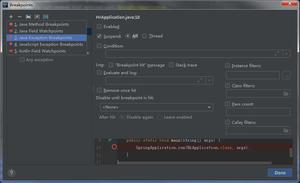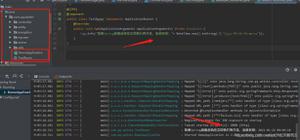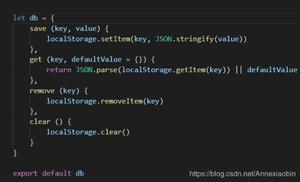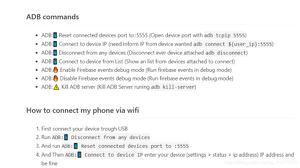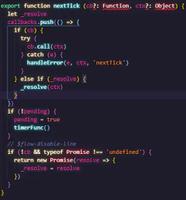React路由管理之React Router总结
React项目通常都有很多的URL需要管理,最常使用的解决方案就是React Router了,最近学习了一下,主要是看了一下官方的英文文档,加以总结,以备后查。
React Router是做什么的呢,官方的介绍是:
A complete routing library for React,keeps your UI in sync with the URL. It has a simple API with powerful features like lazy code loading, dynamic route matching, and location transition handling built right in. Make the URL your first thought, not an after-thought.
大意即:让UI组件和URL保持同步,通过简单的API即可实现强大的特性如:代码懒加载,动态路由匹配,路径过渡处理等。
下面是一些React Router的用法:
一 简单渲染Route
有一点需要牢记于心,Router 是作为一个React组件,可以进行渲染。
// ...
import { Router, Route, hashHistory } from 'react-router" title="react-router">react-router'
render((
<Router history={hashHistory}>
<Route path="/" component={App}/>
</Router>
), document.getElementById('app'))
这里使用了hashHistory - 它管理路由历史与URL的哈希部分。
添加更多的路由,并指定它们对应的组件
import About from './modules/About'
import Repos from './modules/Repos'
render((
<Router history={hashHistory}>
<Route path="/" component={App}/>
<Route path="/repos" component={Repos}/>
<Route path="/about" component={About}/>
</Router>
), document.getElementById('app'))
二 Link
// modules/App.js
import React from 'react'
import { Link } from 'react-router'
export default React.createClass({
render() {
return (
<div>
<h1>React Router Tutorial</h1>
<ul role="nav">
<li><Link to="/about">About</Link></li>
<li><Link to="/repos">Repos</Link></li>
</ul>
</div>
)
}
})
这里使用了Link 组件,它可以渲染出链接并使用 to 属性指向相应的路由。
三 嵌套路由
如果我们想添加一个导航栏,需要存在于每个页面上。如果没有路由器,我们就需要封装一个一个nav组件,并在每一个页面组件都引用和渲染。随着应用程序的增长代码会显得很冗余。React-router则提供了另一种方式来嵌套共享UI组件。
实际上,我们的app都是一系列嵌套的盒子,对应的url也能够说明这种嵌套关系:
<App> {/* url / */}
<Repos> {/* url /repos */}
<Repo/> {/* url /repos/123 */}
</Repos>
</App>
因此,可以通过把子组件嵌套到 公共组件 App上使得 App组件上的 导航栏 Nav 等公共部分能够共享:
// index.js
// ...
render((
<Router history={hashHistory}>
<Route path="/" component={App}>
{/* 注意这里把两个子组件放在Route里嵌套在了App的Route里/}
<Route path="/repos" component={Repos}/>
<Route path="/about" component={About}/>
</Route>
</Router>
), document.getElementById('app'))
接下来,在App中将children渲染出来:
// modules/App.js
// ...
render() {
return (
<div>
<h1>React Router Tutorial</h1>
<ul role="nav">
<li><Link to="/about">About</Link></li>
<li><Link to="/repos">Repos</Link></li>
</ul>
{/* 注意这里将子组件渲染出来 */}
{this.props.children}
</div>
)
}
// ...
四 有效链接
Link组件和a标签的不同点之一就在于Link可以知道其指向的路径是否是一个有效的路由。
<li><Link to="/about" activeStyle={{ color: 'red' }}>About</Link></li>
<li><Link to="/repos" activeStyle={{ color: 'red' }}>Repos</Link></li>
可以使用 activeStyle 指定有效链接的样式,也可以使用activeClassName指定有效链接的样式类。
大多数时候,我们并不需要知道链接是否有效,但在导航中这个特性则十分重要。比如:可以在导航栏中只显示合法的路由链接。
// modules/NavLink.js
import React from 'react'
import { Link } from 'react-router'
export default React.createClass({
render() {
return <Link {...this.props} activeClassName="active"/>
}
})
// modules/App.js
import NavLink from './NavLink'
// ...
<li><NavLink to="/about">About</NavLink></li>
<li><NavLink to="/repos">Repos</NavLink></li>
可以在NavLink中指定只有 .active 的链接才显示,这样如果路由无效,则该链接就不会出现在导航栏中了。
五 URL参数
考虑下面的url:
/repos/reactjs/react-router
/repos/facebook/react
他们可能对应的是这种形式:
/repos/:userName/:repoName
:后面是可变的参数
url中的可变参数可以通过 this.props.params[paramsName] 获取到:
// modules/Repo.js
import React from 'react'
export default React.createClass({
render() {
return (
<div>
{/* 注意这里通过this.props.params.repoName 获取到url中的repoName参数的值 */}
<h2>{this.props.params.repoName}</h2>
</div>
)
}
})
// index.js
// ...
// import Repo
import Repo from './modules/Repo'
render((
<Router history={hashHistory}>
<Route path="/" component={App}>
<Route path="/repos" component={Repos}/>
{/* 注意这里的路径 带了 :参数 */}
<Route path="/repos/:userName/:repoName" component={Repo}/>
<Route path="/about" component={About}/>
</Route>
</Router>
), document.getElementById('app'))
接下来访问 /repos/reactjs/react-router 和 /repos/facebook/react 就会看到不同的内容了。
六 默认路由
// index.js
import { Router, Route, hashHistory, IndexRoute } from 'react-router'
// and the Home component
import Home from './modules/Home'
// ...
render((
<Router history={hashHistory}>
<Route path="/" component={App}>
{/* 注意这里* /}
<IndexRoute component={Home}/>
<Route path="/repos" component={Repos}>
<Route path="/repos/:userName/:repoName" component={Repo}/>
</Route>
<Route path="/about" component={About}/>
</Route>
</Router>
), document.getElementById('app'))
这里添加了IndexRoute来指定默认的路径 / 所对应的组件。注意它没有path属性值。
同理也有 默认链接组件 IndexLink。、
七 使用Browser History
前面的例子一直使用的是hashHistory,因为它一直可以运行,但更好的方式是使用Browser History,它可以不依赖哈希端口 (#)。
首先需要改 index.js:
// ...
// bring in `browserHistory` instead of `hashHistory`
import { Router, Route, browserHistory, IndexRoute } from 'react-router'
render((
{/* 注意这里 */}
<Router history={browserHistory}>
{/* ... */}
</Router>
), document.getElementById('app'))
其次需要 修改webpack的本地服务配置,打开 package.json 添加 –history-api-fallback :
"start": "webpack-dev-server --inline --content-base . --history-api-fallback"
最后需要在 index.html中 将文件的路径改为相对路径:
<!-- index.html -->
<!-- index.css 改为 /index.css -->
<link rel="stylesheet" href="/index.css" rel="external nofollow" >
<!-- bundle.js 改为 /bundle.js -->
<script src="/bundle.js"></script>
这样就去掉了url中的 # 。
以上是 React路由管理之React Router总结 的全部内容, 来源链接: utcz.com/z/355414.html


